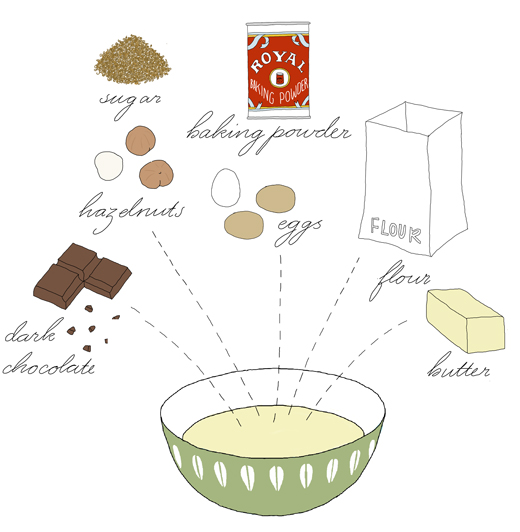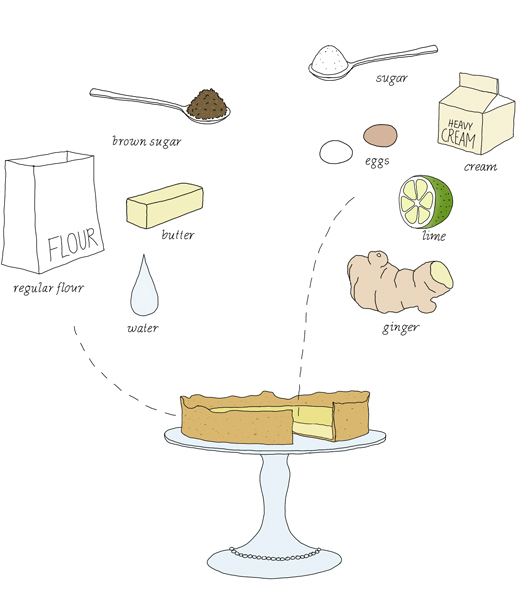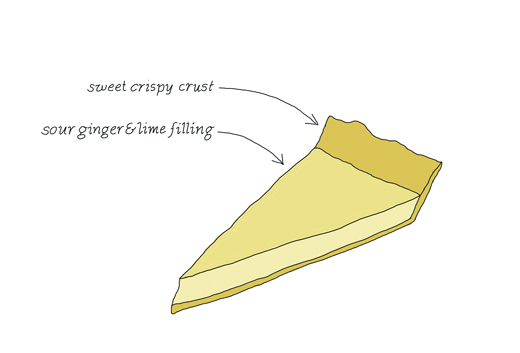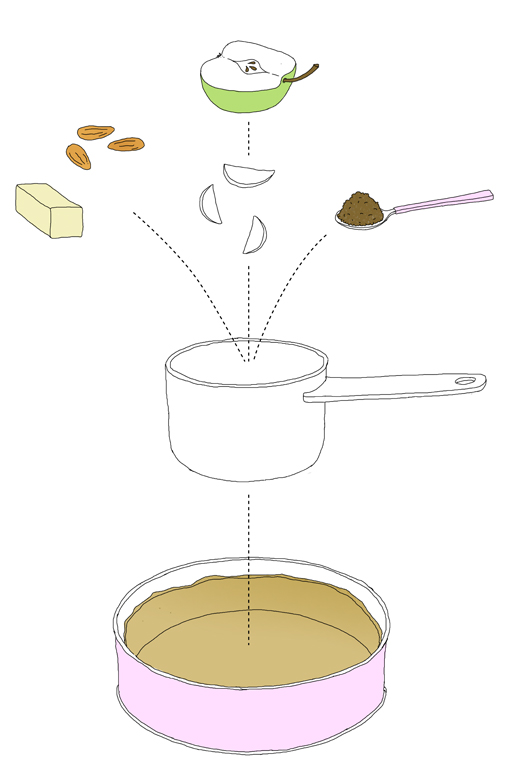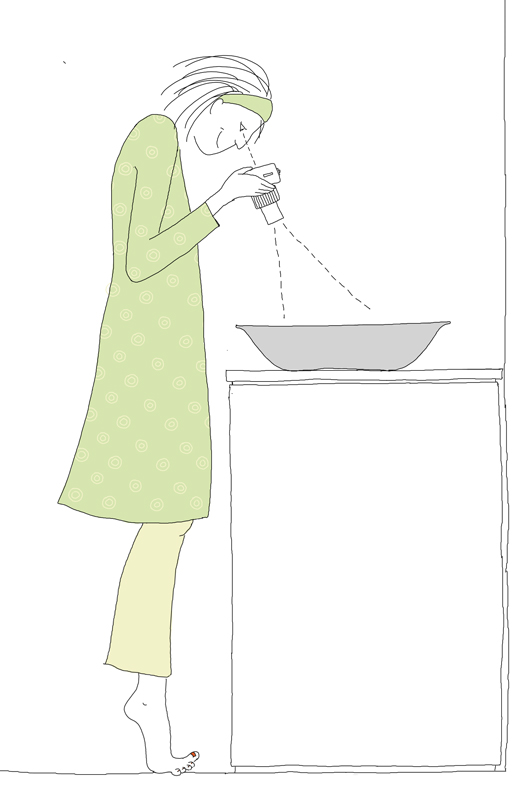
Story by Anna Brones • Illustration by Johanna Kindvall • Recipe by both
Put two Swedes who love to cook in a kitchen together and there will be an immediate discussion of what baked good needs to be concocted for afternoon coffee. After all, we don’t mess around with our coffee breaks, and a serious coffee break deserves a serious pastry. So we settled on mazariner.
Mazariner are the darling of Swedish cafes, a balance of buttery pastry and almond filling topped with a thin layer of icing; the type of thing you bite into and wonder where this food has been all of your life. They’re just fancy enough that you don’t keep them on hand at all times, but you don’t have to put them on a serving tray.
Made in small oval tart tins, they can seem daunting to make, but as it turns out, are easy enough that you don’t need to cruise to your local IKEA to track down the mass produced version – although they do have them if you’re in a Swedish food pinch.
Our recipe search started with a few Swedish cookbooks and a call to my mother who was immediately reciting the ingredients from a page she had ripped out of a Swedish magazine sometime in the late 80s – when you come across a good recipe, you hold on to it. Johanna, being a more skilled pastry “chef” than myself did a creative combination of the many versions, and we both decided that plain icing just wouldn’t suffice. Add a little orange juice and you have a real masterpiece.
Make a batch of these, brew a French press and it will almost be like you’re sitting at a cafe in Stockholm. Almost.
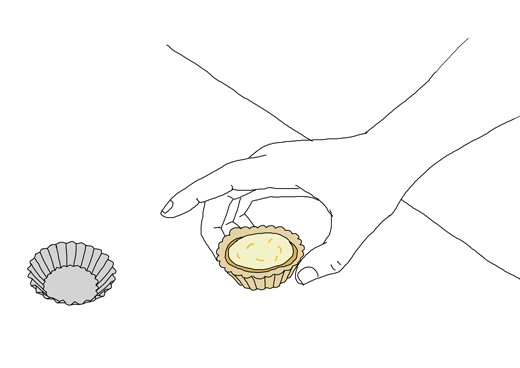
mazariner
dough
7 oz butter (almost 2 sticks)
2 cups regular flour
¼ cup sucanat or organic cane sugar
2 teaspoons whole cardamom (crushed in a mortar, or slightly ground in a coffee grinder)
one small egg
filling
one cup blanched, ground almonds (can be replaced with almond meal)
2 bitter almonds (about 1 teaspoon almond extract, or more depending on how strong you want the taste)
2.5 oz butter
½ cup sucanat or organic cane sugar
3 small eggs
icing
juice from an orange
¼ cup confectioner’s sugar
In a large wide bowl cream together butter, egg and sugar. With your hands, mix in flour – this can be done either in the bowl or directly on a clean counter top. Crush the cardamom with a mortar and pestle as fine as you wish. If you don’t have a mortar or grinder, you can use pre-ground cardamom. Add it to the dough and blend well. Let the dough rest in a cool place for at least 30 minutes.
While the pastry dough rests, blanch the almonds by pouring boiling hot water over them and letting soak for a few minutes. They are ready when the skin slips off easily. Skin all of the almonds and grind them into a fine meal in a food processor. In a small saucepan, melt the butter and set aside to cool. Whisk the eggs together with sugar to a porous batter and add in almonds, almond extract (if you didn’t use bitter almonds) and butter. Stir together until well blended.
Grease small tartlet tins* (see illustration above) with butter. Line the molds with a thin layer of dough (about 1/8”) and fill them almost to the top with the almond mixture. If there is any leftover dough you can freeze it and use it some other time.
Bake in the oven at 400°F for about 15 minutes. The cakes should have got a slightly brown color on top. Let them cool a little before removing the cakes from the mold.
While the mazariner bake, prepare the icing. In a small bowl add the confectioner’s sugar and drip in some orange juice. The icing should be a little thick but still easy to drizzle over the mazariner. Wait until the mazariner have cooled before icing them.
Serve the mazariner for an afternoon tea or coffee break, you’re sure to make some new friends if you pull these out.
*If you don’t have small single cake molds as described you can use mini muffin trays or similar forms. In Sweden, disposable aluminum forms are often used, but stay away from single-use containers and do the best with what you have. We always encourage creativity!
–
Other Swedish baked classics
Semlor – cardamom rich bun is filled with almond paste and heavy whipped cream
Kanelbullar – Swedish Cinnamon Bun
Lussebullar – Saffron Buns
Pepparkakor – Ginger Bread Cookies (at EcoSalon)

This article was originally published at EcoSalon, 15 May 2012
